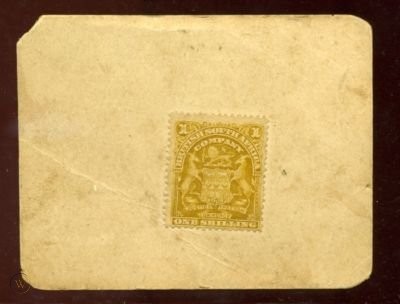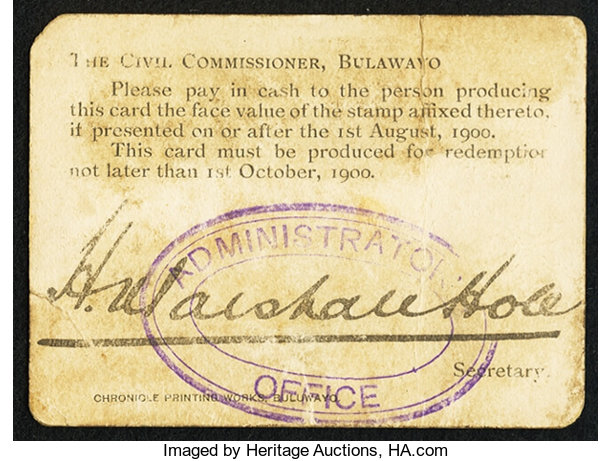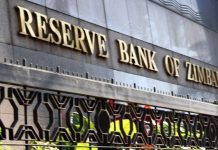Early State-making and the historical foundations of Zimbabwe’s colonial monetary system: 1890-1900
Tinashe Nyamunda
What is money in Zimbabwe? Given the contentious and dynamic experiences in Zimbabwe’s recent history, there is no easy answer to this question. But a glimpse into the country’s monetary history can provide some indication as to how the concept of money developed, at least from its colonial roots, and the kinds of currencies that have made up the country’s exchange arrangements. The country has spent at least half of its fiscal existence using foreign currencies, pseudo currencies, facing cash shortages, and has a legacy of externally based money and key currency pegged local currencies which have provided numismaticians (coin collectors) and note collectors with fascinating and rich currency history.
At the heart of this history is another crucial question. Why is this monetary experience important to Zimbabwe’s contemporary and economic history? Those who lived through the Zimbabwean economic plunge that accelerated in the early 2000s will remember the emphasis given to monetary policy, especially around the time that Gideon Gono became the Governor of the Reserve Bank of Zimbabwe (RBZ). Some in the Mugabe regime viewed him as the Messiah of the country’s ailing economy and his role became that of de facto Prime Minister who governed through quasi-fiscal activities. Monetary policy became the primary strategy to address the crisis engulfing Zimbabwe. This was based on Gono’s credentials as a banker and economist.
Under his dispensation, currency was taken merely as a neutral means of exchange, standard of deferred payment, unit of account and store of value. These are the universally accepted characteristics of money in neo-liberal economics. The instability in the Zimbabwean economy post-2000, it was resolved, would be addressed through managing money as a concept, and the preferred tool was monetary policy. diy ivermectin cream Ultimately, Zimbabwe’s currency lost all of its functions to a hyperinflation that peaked at 89.7 sextillion percent in 2009, and shifted the monetary terrain in unimaginable ways since then.
Lacking in policy makers’ minds about how to resolve the crisis was a lack of imagination of what the Zimbabwean economy ought to be. Part of the explanation is that it is difficult to address any kind of challenges when the antecedents of the system or structure you are managing is unknown. This is the case in Zimbabwe. Little is known about the origins of the country’s currency arrangements and how it developed over time. Part of the explanation for these problems lies in this history.
Without an appreciation of the country’s monetary history, how could policy makers have succeeded in using monetary policy to resolve the country’s challenges? Long after Gono, this problematic and ahistorical emphasis on using monetary policies to address the country’s economic challenges still persists under Mthuli Ncube and John Mangudya. This article attempts to shift the discussion a little. It hopes to at least introduce those interested to some elements of Zimbabwe’s monetary and currency history by pointing to some of the important foundations that have been instrumental in shaping the country’s currency terrain which point to possibilities in how Zimbabwe’s current problems can be resolved.
Every week, a summary of developments in the country’s currency development from 1890-date will be done in this column. The column kicks off with the first ten years, covering the period between colonisation in 1890 until 1900, when the country’s first Legislative Council (in 1898) was established. It will be followed next week by a summary of developments between 1900 and 1910 and so on until we eventually cover Zimbabwean history to 2020.
While far from being exhaustive, it is hoped that these summaries can provide interested readers with an introduction to how money became what it is in the country from the lens of currency history. The column attempts to provide a glimpse of how the monetary system began, the changes it encountered and how it has culminated in the current arrangements we have at present.
Zimbabwe became a British colony between 1890 and 1980, named variously as Southern Rhodesia (1898 – 1953); Southern Rhodesia then became part of the Federation of Rhodesia and Nyasaland with Northern Rhodesia (renamed Zambia at independence in 1964) and Nyasaland (renamed Malawi at independence in 1964) between 1953 – 1963); the rebel government of Ian Smith then renamed the colony Rhodesia after a Unilateral Declaration of Independence from Britain between 1965 and 1979; and during the period of an internal settlement between Smith and some African nationalists led Bishop Abel Muzorewa, was renamed Rhodesia – Zimbabwe in 1979. At the attainment of independence in 1980, the country was renamed Zimbabwe. But throughout its colonial history, it experienced sustained currency instability which manifested itself in different ways as unpacked in what follows.
The advent of British colonial rule, initially under Cecil John Rhodes’ British South Africa Company (BSAC) between 1890 and 1923 saw the introduction of a new currency. Similar developments occurred once the British annexed the territories that became Zambia and Malawi in 1891 as part of the imperial strategy of introducing sterling currency to all British colonies. The reason behind this was to ensure the smooth exchange of colonial products using a British based international currency at prices and exchange standards determined by the centre and to its ultimate advantage. This partially explains the mechanism of colonial exploitation.
Occurring at a time when London stood at the helm of the world financial system, controlling the gold standard, the annexation of the region and the introduction of a new currency, together with a host of other economic measures served the interests of the imperial power. Besides ensuring that Southern Rhodesia’s gold was sold in London, imperial and colonial officials also ensured that the region’s currency was tied to that of the British Empire.
Securing the colony, its economy and people to work for the colonial project required, among other things, monetisation. Imposing imperial monetary traditions on African colonies insured, as Economic Historian Antony Hopkins aptly summarised, that “the interests of leading Western nations lay in ensuring that the currencies of engaged in international trade were soundly based, readily convertible, and otherwise compatible with the workings of the gold standard so that world commerce could be conducted and expanded with smooth efficiency”. But currency compatibility with the West did not necessarily translate into local stability and benefit for African communities in the local colonial economy. If anything, it resulted in the subjugation of indigenous exchange traditions and their displacement by an exploitative settler economy.
Among the ways in which the colonial monetary system worked, as unpacked below, is that it facilitated establishment of a tax system to both finance colonial rule and coerce Africans into an ultra-cheap labour system in which they worked for settler mining capital, enriching the white miners and the imperial economy while impoverishing Africans through racial segregation, land dispossession and poor wages based labour.
A few months after white settlers occupied the new colony, the BSAC proclaimed Ordinance number 3 (1891) setting sterling based currency “in terms of which the standard coinage in the colony of the Cape of Good Hope became the standard coinage to be used within the territorial limits set out in the ordinance, namely Mashonaland”.
The coinage used in the Cape colony was minted at the Royal Mint in London. Under this arrangement in British colonial administration, “the exercise of responsibility over currency was always subject to a reserved power of the home government”. After the passage of monetary legislation, currency became a creature of the law, a legacy that persists to date. ivermectina serve para que As I write, only the state has the legal mandate to determine what currency is in use, as they have just done with the $10 and $20 note that will be introduced into circulation starting this week.
Through violent colonial wars in 1893 and 1896, when the BSAC usurped political power from African rulers, the chartered company imposed colonial laws, including those on currency, making it illegal to use any other monetary standards except what was recognised by law as legal tender. These were the foundations of the colonial state’s control of exchange standards.
But the major challenges to enforcing British and Cape currencies which became legal tender throughout the period of chartered rule to 1923 was the shortage of species. Moreover, the infra structure of a local settler government apparatus and its institutions was still in its infancy. Much like today’s shortages of currency, the early colonial state faced supply bottlenecks. Unlike today, in the early colonial days, there was no local central bank. The money that circulated was in the form of coins minted by Britain’s Royal Mint and shipped either to South African or the Portuguese port and then transported by carriage over land to Britain’s Southern African colonies, including colonial Zimbabwe. But the challenge was that the supply was erratic and this severely dislocated business.
To resolve this problem, a number of measures were put in place. Instead of exchanging actual coins, traders drew cheques. These cheques were drawn on the first bank established in 1892 in Southern Rhodesia, the Standard Bank of South Africa limited. But many of these cheques were doubtful and usually bounced, making many resort to barter trade. Another strategy was to try and use pseudo currencies such as coupons to cover for these coin shortages. For example, in 1895, the Civil Commissioner of Bulawayo – Hugh Marshal Hole, worried about the major problems to business caused by currency shortages and the high level of doubtful cheques, issued stamped coupons. This was simply a card with a stamp of a specific value affixed to it which was allowed to circulate in place of money and could be redeemed once coins were delivered and became available.

The back of a Marshal Hole coupon
You can compare these stamped coupons to a number of other pseudo currencies that have been used in contemporary Zimbabwe. Some may remember the Agro and Bearer – cheques that were issued by the RBZ [in 2003 and 2008], or the bond note when it was initially introduced in 2016. Just like in the early years of colonial rule, these systems were abused by many in the market and pseudo currencies were very inefficient. As a result, ordinary people continued to imagine ways, just like we see in today’s Zimbabwe, that they could simply make do despite the challenges that they faced in the currency terrain.
A further problem was that many Africans, most of whom enjoyed economic buoyancy on the basis of increased markets brought by white miners who had created markets for food, did not always like trading using these coins because of Europeans’ unruly and unfair trade practices. Instead, many preferred, among other methods, barter.
But this went against the intentions of the colonial state which were to make colonial economies based on convertible currencies so that they could exploit and extract mineral resources. So while these practices continued, the colonial state devised ways of ensuring that their exchange standards would eventually be fully and legally enforced.
Among the ways to ensure that Africans were drawn into the colonial exchange system was taxation. Because many Africans did so well in terms of trade, the colonial state put in place a number of methods to force them to use colonial currency. While the BSAC wanted to ensure that colonial currency became the means of exchange in the colony, work at the mines also required ultra-cheap African labour. After all, this was what the colonial enterprise was to be founded on. As a result, a number of taxes were imposed, for example, the poll tax, cattle tax, among others, which had to be paid in British coinage, and which could only be acquired through working for white mines or selling through this currency.
But the major challenge for the British was how to ensure that this labour could be coerced. Hirtherto, most Africans resorted to farming and selling their produce for cash whenever they could, thus managing to pay their taxes. However, given that the colonial economy was based on gold mining and the provision of cheap African labour, African agricultural production was viewed by white settlers and the nascent BSAC administrative structure as undesirable. Ultimately, the state resolved to start a process of taking productive land away from Africans and resettling them in unproductive land in African reserves, starting with areas such as Gwaai and Shangani. This process of de-peasentisation culminated in the Land Apportionment Act (1930). This displaced Africans from the most fertile land, most of which was transferred to white farmers, thus reducing the indigenous people to a pool of wage-earning labourers as they needed to earn money required to pay taxes.
But to ensure that these foundations endured, the BSAC laid the foundations for a colonial governmental system. In 1898, the Legislative Council (LegCo) from which the country’s governmental institutions evolved from, was established as the first form of government that would later build institutions and pass legislation to govern the colony.
The first order of business of the LegCo was to try and lay the foundations for the economic management of the colony. They all resolved, after realising the problems that the new colony had in acquiring coinage from Britain, to create a State and Public Bank of Issue. The Bank of Issue would be modelled along the lines of the imperial centre’s Bank of England. But because of colonial status, the Bill drawn up for this purpose could never be passed without Royal Assent. ivermectin dog breed morning In other words, the resident colonial government could not pass any laws without the approval of the imperial government in Whitehall.
In the next article, we will discuss whether what the State and Public Bank was designed to be, what its functions should have been, and whether this was passed or not. We will then pick up the discussions on what further measures were taken by the LegCo and its settler constituency as it built upon the foundations of the colonial economy to put in place further monetary and financial arrangements. But to conclude, by 1900, three things had been accomplished in the establishment of the colonial state and economy. First was the gradual annexation of productive land for the BSAC and its white constituency. Secondly, how cheap African labour was secured and, thirdly, how Africans were drawn into the colonial monetary system. Through these processes, the foundations of the colonial economy were laid.
- Tinashe Nyamunda is in the African Modernities Past and Present (AMPP) research group and North West University where he is Associate Professor in Economic History.












Without doubt, an enquiry into Zimbabwe’s monetary past is long overdue to serve as a logic preamble to contemporary debates surrounding the state of the economy today. This promises to be an exciting series and I look forward to it with the keen hope that this conversation extends beyond this space to influence not only a better societal appreciation of the history of money in Zimbabwe but impacts the manner of monetary, fiscal and economic policy in the country and region as a whole.
Without doubt, an enquiry into Zimbabwe’s monetary past is long overdue to serve as a logic preamble to contemporary debates surrounding the state of the economy today. This promises to be an exciting series and I look forward to it with the keen hope that this conversation extends beyond this space to influence not only a better societal appreciation of the history of money in Zimbabwe but impacts the manner of monetary, fiscal and economic policy in the country and region as a whole.
Very interesting and good article that demystifies the currency issues in Zim. Well articulated as well….. looking forward to the next read.
A well articulated piece! I thoroughly enjoyed it and look forward to the series you promise us. Out of curiosity I just want to know how much of the money was in circulation in the colony during the period you just discussed. Also, I’m interested to know how the speculators paradise impacted Southern Rhodesia’s currency issues. History has shown that mineral discoveries at the Cape (the copper boom, followed by that of diamonds and gold) resulted in the issuing of loans to white settlers. Was it the case in Southern Rhodesia? Is yes, did it by any chance influence LegCo to order the issuing of more currency?